GIC Events
[Review]GIC Naju Tour with Warren
- Name
- 임은정
- Date
- 2012-05-08
- Views
- 1384 회

On the Eastern side of Naju, there is an old flagpole that remains tall to balance the city in relation to the Geumseong Mountains to the west. In early times, this city was constructed on theories of geomancy, a basic idea in Korean tradition. You can see remnants of this idea in many aspects of Korea, including the country’s flag, which features a red and blue taegeuk, balanced perfectly into a circle. As I stood facing west passed the flagpole, I could see a city that is filled with tradition and history, but is also striving for modernization. In between the flagpole and mountain range sits a small sea of apartment buildings, serving as a reminder that I was still in 2012.
On a clear spring Saturday, I was lucky enough to participate in the GIC tour to Naju, the capital of the South Jeolla province until it was moved to our very own Gwangju around the turn of the 20th century. Naju was built along the Yeongsan River, which served as a trading route to other cities such as Seoul and Gwangju before emptying in Mokpo. Only, whereas these other cities like Seoul and Gwangju have modernized in the past fifty years, Naju remains the farming town that it was years ago.
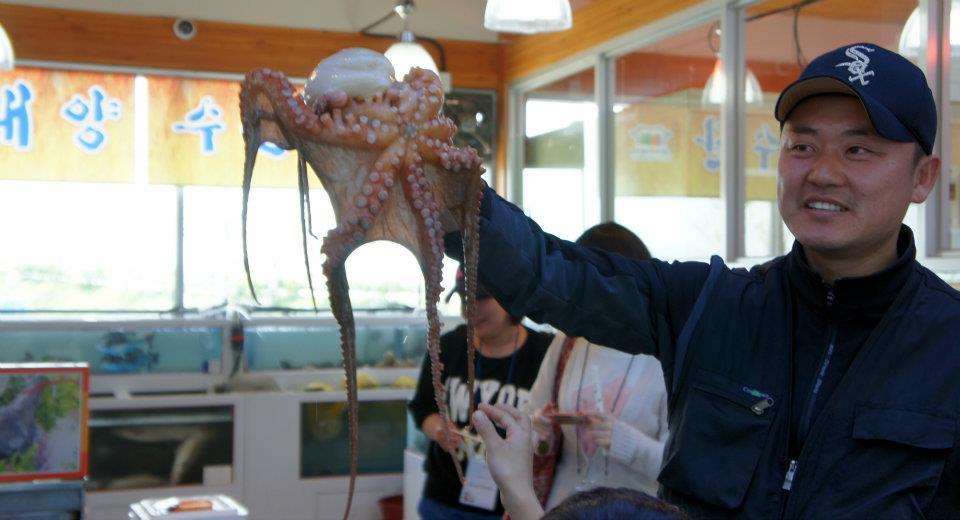
Early in our tour, we passed by Naju’s old marketplace, which was in the process of being torn down. The Korean traditional open-air marketplace was replaced by a newer one across the street. Here, I tried Hongeo (홍어), a raw skate fish that has an aftertaste like ammonia. I did not exactly enjoy it, but it is nice to say that I tried a terrible Korean food for once. Everything cannot be as good as Bibimbap.
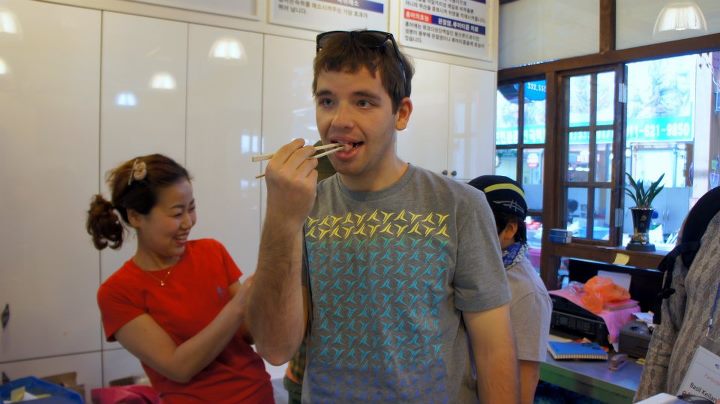
Speaking of delicious Korean food, for lunch, we went to a traditional Korean restaurant and ate gomtang (곰탕), a beef soup. This may have been one of the best Korean dishes I’ve had thus far in my experience here. I finished my dish like a hungry bear, which is funny, considering the first syllable (곰) can translate to mean “bear.”
After our delicious lunch, we headed over to Naju’s Confucian Academy. At the Academy, we met a green tea maker and participated in a tea ceremony while watching a student sing an old-style tune while strumming a Korean harp. I was lucky enough to be chosen as the tea master for my group of five. While serving green tea to a group seems like an easy task, it was more meticulous than one would think, and led to a few wrong steps on my part. On the bright side, the tea was excellent.
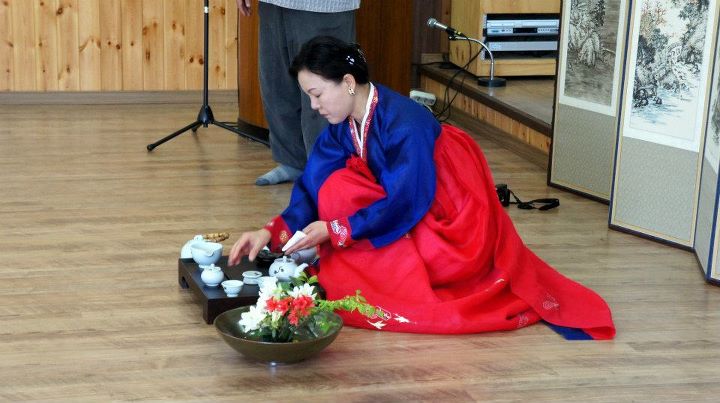
After tea, we were led to a small spring that held a special story. The story says that here, an old king of Naju named Wangun met a woman named Janghwa who would one day be his queen. Janghwa offered the king a cup of water with a flower inside, intending to keep the king from drinking too fast and cause a stomach ache. Impressed by her wisdom, Wangun made her his queen.

After seeing traditional Korean tombs, the tour was finally led to our last stop of the afternoon - a small Doenjang farm. Here, we met the farm’s owner, and even tried some of his creations, like soy bean paste and red pepper paste (made from pears, Naju’s specialty food). He also treated us to a tangerine drink in his house that he had made from fermented sugar. That’s an awesome kind of hospitality.
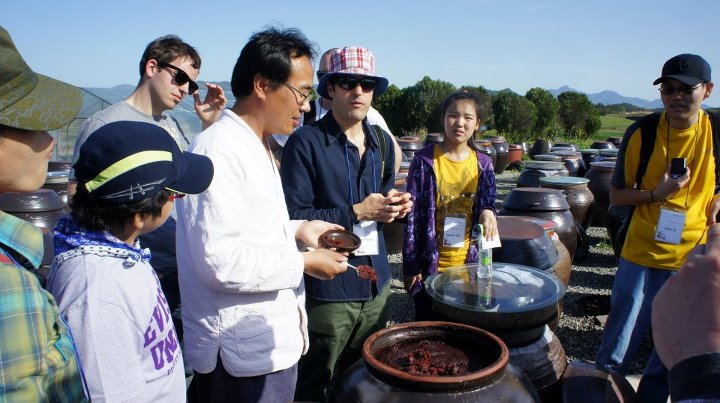
The GIC tour to Naju was a learning experience. Though I love Gwangju, it’s always nice to see what else this beautiful country has to offer, especially a city filled with as much history as Naju. I would like to thank Warren, our tour guide, for being as knowledgeable and as prepared as he was. The tour was fantastic. For the readers, I hope you join us next month.
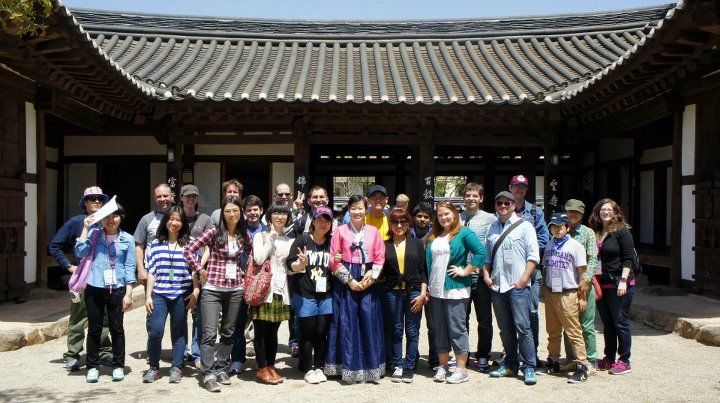
Written by_Jonathan Haines
>>Click here for more photos!!
- previous post Review of Song Jae-pyung's GIC TalK "Mapping Deaspora Indentities"
- next post New Arrival for April 2012
